The origins of ice hockey, like many other sports, are still unknown. Some people think that hurling, an old Irish game, is where the game originated. Others say ice hockey evolved from stick and ball games that were popular in the Middle Ages or in ancient Greece and Egypt.
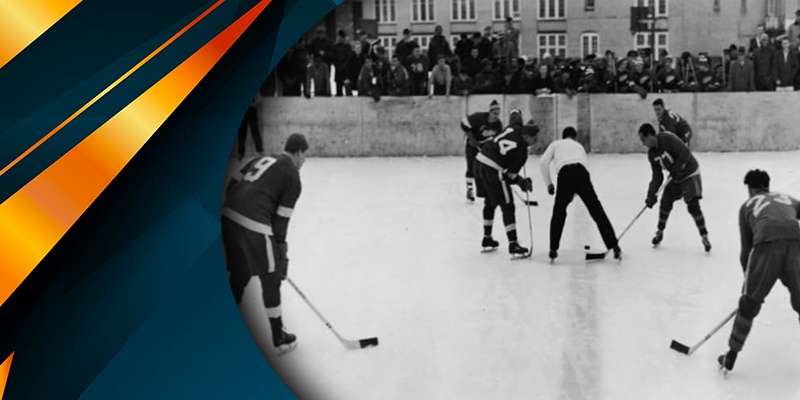
But according to Toronto’s Hockey Hall of Fame curator, Phil Pritchard, a painting from the 1500s depicts figures playing a game that resembles hockey on ice.
This article discusses the evolution of ice hockey in the United States, Canada, England, and globally.
Early Sticks And Balls Games
A variety of “stick and ball games” have their roots in prehistoric times, with “hockey” being one of them. According to available data, stick and ball games may have been popular in ancient Greece and Egypt, and Indigenous Americans played them before European settlers arrived.
According to abundant evidence, games of sticks and balls were also played in medieval Europe.
An illustration of men playing the game of choule à la crosse, where players use curved sticks to move and direct a ball toward a specific target, can be found in the Speculum Maius, a 13th-century encyclopedia compiled by Dominican friar Vincent of Beauvais (France).
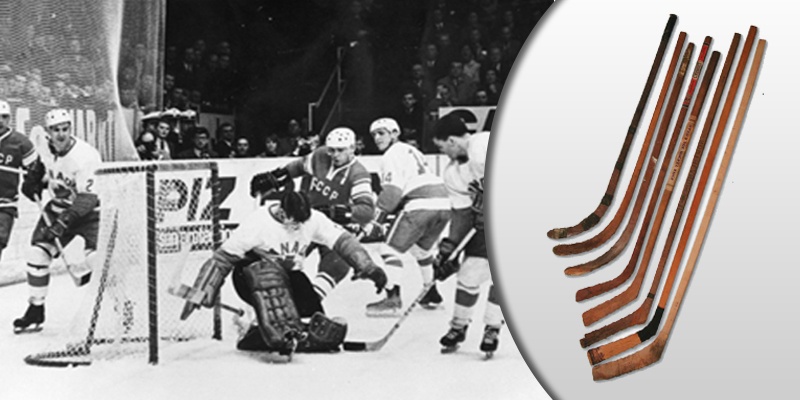
However, shinty (Scotland), hurling (Ireland) and bandy are some of the stick-and-ball sports that gave rise to hockey in the British Isles (England). These games, dating back to the 14th century, had a fundamental structure similar to one another.
Hurling is a traditional Irish game of sticks and balls that was once played on smooth surfaces and is similar to field hockey.
Another comparable game, “bandy” or “bandie-ball,” was played in England. It’s thought that the name came from either the game’s bent stick or the verb “to bandy,” which means to hit back and forth.
Hurling, shinny, and bandy were commonly played with hard wooden balls, which frequently resulted in shin injuries, whether they were played on the ground or ice. However, cork-bungs began to take the place of balls around the middle of the 18th century, at least in England. Such a bung is depicted being used for ice hockey in an engraving published by Joseph Le Petit in London in 1797.
The Origin of the Name “Hockey.”
The Canadian Encyclopedia states that Juvenile Sports and Pastimes, a 1773 English publication, is where the word “hockey” first appeared. But the name might have existed before this earliest recorded reference, as field hockey, a game played on the ground was also developed during that time.
Newspapers in Great Britain began to mention ice hockey as early as the 1840s. A hockey match involving about 20 people skating on a canal was fatal, according to a Scottish newspaper’s 1842 report: “The ice suddenly broke in, and several were immersed, but rescued, except an unfortunate lad.”
The Prince of Wales and a London skating team participated in a game of hockey on a lake in 1864. According to a London newspaper, the game continued until two o’clock, “when the prince and the players repaired to the Fishing Temple, where they took part in a sumptuous luncheon.”
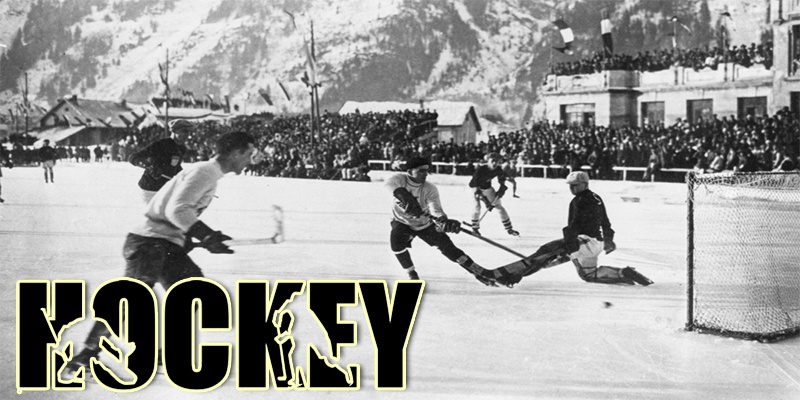
But the term “hockey” is not as old as bandy, hurling, or shinty. Its earliest recorded use is in Richard Johnson’s Juvenile Sports and Pastimes by Richard Johnson, published in 1773. The title “New Improvements to the Game of Hockey” in Chapter XI of the book shows that the term “hockey” had been used for a while. The chapter describes the game using “hockey” to refer to the barrel plug used to play it rather than the stick typically associated with the sport. Given the sticks shape, this seems to refute the most widely accepted theory that the word “hockey” is derived from the French term “hoquet,” which means “shepherd’s staff.”
Hockey historians Jean-Patrice Martel and Carl Gidén, Patrick Houda proposed that the term “hockey” may have originated from “hock ale” since it first appeared soon after this switch. It was initially used to describe the bung rather than the stick. This beer, brewed for the Hocktide celebrations was brought in barrels with bungs which might have been especially well suited for the hockey game. In that period, the word “hockey” (or “hocky”) was used to describe both the beer and to denote intoxication.
The History of Ice Hockey in England
Most of the prestigious schools in London, including Eton and Harrow, played field hockey in the early 1790s and 1800s. The founding rules of field hockey were probably drafted in Harrow in 1852.
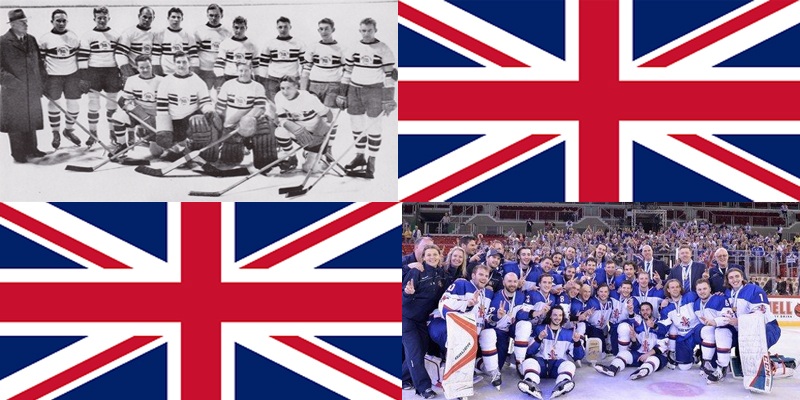
As a result, hockey spread outside of London and became a popular activity played on the ground and sometimes on ice. Ice hockey was played on multiple occasions in England in the nineteenth century. Even though some of the games are described as having both “skaters and sliders” (players who wear skates and those who don’t), adults typically wear skates when they play. Naturalist Charles Darwin made reference to hockey in his letter to his young son William Erasmus, who in 1853 was away at school,. He inquires, “Do you have a decent pond to skate on?” I used to enjoy playing hockey on skates very much.
The History of Ice Hockey in the United States
The first organized game of this forerunner to modern ice hockey was played in the United States on November 17, 1883, at the St. Paul’s School in Concord, New Hampshire. Following this, in 1893, Johns Hopkins University and Yale University played the first official ice hockey game in the U.S., which is generally regarded as the beginning of the sport’s current era.
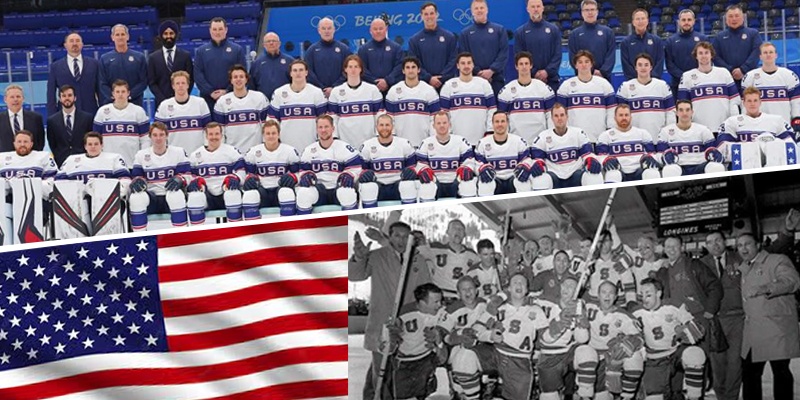
In Maryland, the first synthetic ice rink was constructed in 1894. The skating rink’s name was North Avenue Ice Palace, situated in Baltimore, Maryland. The U.S. Amateur Hockey League was established a short time later, in 1896, and was the country’s first ice hockey league. It was established in New York City when the St. Nicholas Arena, the city’s second indoor ice rink, went into operation.
Hockey Organization and Rules
As the 19th century went on and the sport of hockey gained popularity in England and other parts of the world, it also became more organized. Ice hockey/bandy league play would not have been possible in England due to the country’s climate, which is characterized by its relatively mild winters. However, it was usually possible to play bandy or hockey on the ice during most winters, at least for some days.
Newspapers began publishing game results around 1831, when Colne and Bluntisham played a bandy match that the former team won. On Saturday, February 5, 1831, the Huntingdon, Peterborough and Bedford Gazettes reported on the game.
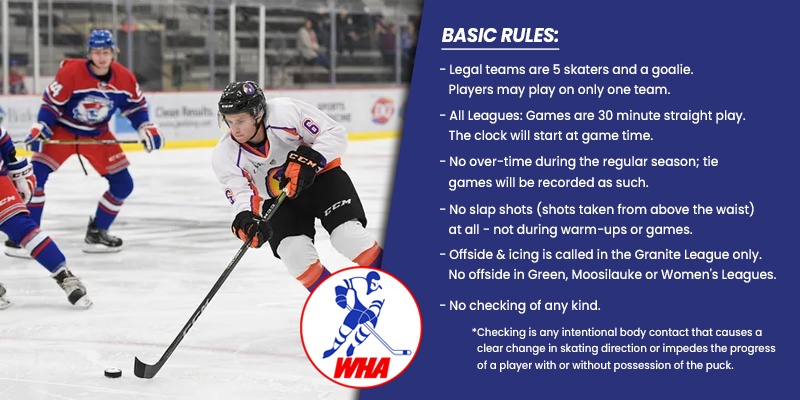
Then, on February 3rd, 1857, teams representing Swavesey and Over got together to play bandy on Mare Fen. Although the final score is unknown, Swavesey was declared the winner and every player (eleven on each side) was named in the local newspaper. Local newspapers reported on more matches, especially in the early 1870s. Several reports included player names, the score or result (win/draw), the length of the match or the break and the goal scorers. This suggests that the game was organized in England with a high degree of formality by the beginning of the 1870s.
At least two books outlining instructions for playing hockey or bandy (the terms were used interchangeably at the time) had been published by then, demonstrating that the game could also be played on ice while wearing skates.
Hockey was given its own entry in The Boy’s Own Book’s 1849 edition, which stated that it was “clearly one of the fastest-growing sports of English youth” and briefly described how it was played on ground surfaces. The article’s conclusion stated, “With a group of skilled skaters, this game offers fine sport, but naturally is best played on ice surfaces.”
In addition to providing instructions on how to play, The Boy’s Handy Book which was published in London in 1863, noted that “Hockey is a winter game, and is often played on ice, and also by skaters.” Though, the authors went on to say that playing hockey on ice was not recommended for safety concerns because “falls against ice are extraordinarily hard.”
In essence, ice hockey was being played, and rules had been established in England by 1875. This was a part of the sport’s lengthy development in the British Isles, that also included shinty matches being played on ice around 1608.
The First Official Hockey Match
The International Ice Hockey Federation claims that two teams of nine men from Montreal’s Victoria Skating Club played the first official ice hockey game on March 3, 1875. However, according to Pritchard, organized games may have been played in Canada and the U.S. earlier in the century.
The organized hockey was played by the McGill university hockey club on March 3, 1875, in Montreal.
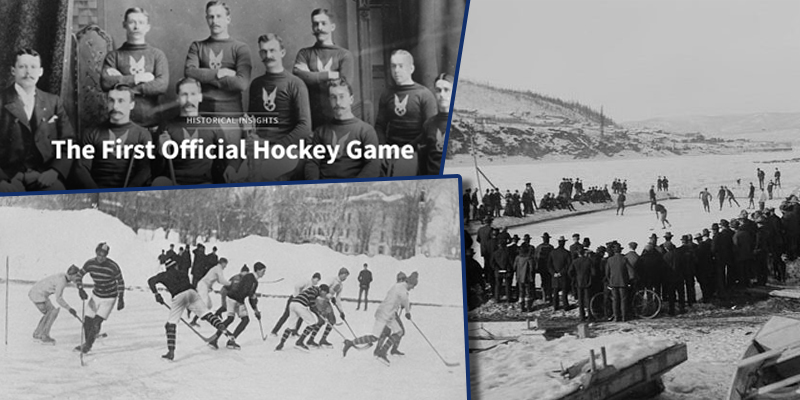
The first-ever indoor ice hockey games played in front of the general public featured two nine-man teams, one of which was led by Creighton. In March 1875, the event was held at the Victoria Skating Rink, which is now known as Boulevard René Levesque and is situated in the area of Montreal bordered by the streets Drummond, de Maisonneuve, and Dorchester. The (Montreal) Gazette advertised this event before the game, and a post-game report was also published. There were nine players on each side, and the game was split into halves. Players on one side included Francis Jarvis, W.O. Griffin, Edwin H. Gough, Thomas J. Potter, William M.S. Barnston, George W. Gardner, Daniel Meagher, and Charles E. Torrance.
The other team included the Campbell brothers, George and Lorne, along with Robert Esdaile, Frederick C. Henshaw, Henry Joseph, William B. Chapman, Edward S. Clouston, Robert H.W. Powell, and James G.A. Creighton.
The smaller rink size caused a significant change from the outdoor version of the game when ice hockey was moved indoors, limiting organized games to a maximum of nine players per team. Until that point, the number of participants in outdoor games was determined mainly by how many people could fit on a frozen river or pond, usually in the dozens.
History Of Ice Hockey Olympic Games
England, Scotland, Ireland, and Wales competed separately in the first men’s Olympic hockey competition held in London in 1908. The competition featured six teams after Germany and France were added.
Hockey made its debut at the London Games but was later removed from the Stockholm Games when host nations were given control over “optional sports.” After being reinstated in Antwerp in 1920 due to pressure from Belgian hockey supporters, it was again omitted in Paris in 1924.
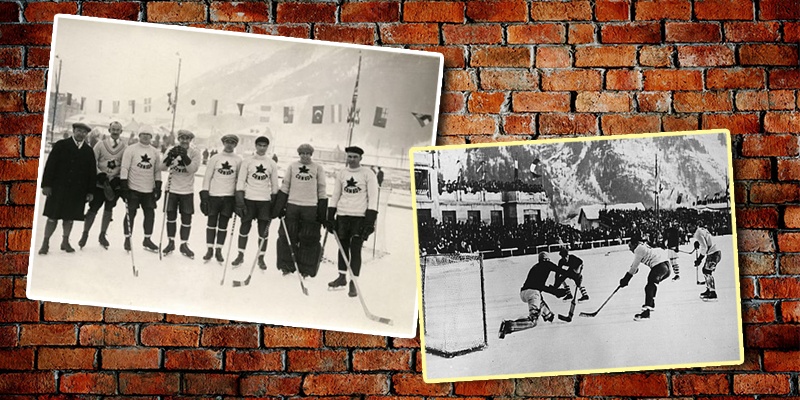
Although the creation of the International Hockey Federation in 1924 came too late for the Olympics in Paris, it did allow hockey to return to Amsterdam in 1928. Women’s hockey was added to the program for the first time in Moscow in 1980, and hockey has been on the schedule ever since.
National Hockey Organization
In 1904, the U.S. Amateur Hockey League joined the International Professional Hockey League.
The Amateur Hockey Association of Canada, the Amateur Hockey League of New York, and the Ontario Hockey Association were all established in 1898.
The Canadian Amateur Hockey League was founded in 1978 to replace the AHAC. The merge Canadian Amateur Hockey League with Hockey Canada in 1994.
The Ontario Professional Hockey League was founded in 1908.
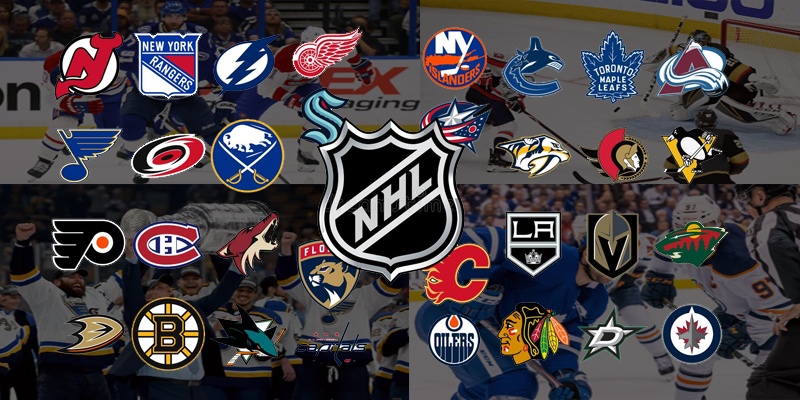
The Montreal Amateur Athletic Association, which is based in Montreal, Quebec, is the country’s oldest athletic organization. The Montreal Amateur Athletic Association is still widely recognized today, but in 1999, it underwent a name change to become the MAA.
Between 1920 and 1925, the U. S. Amateur Hockey Association served as the country’s amateur ice hockey governing body.
The Pacific Coast Hockey Association was established in 1911 by teams from western Canada. This league developed new concepts and regulations that helped ice hockey grow into what it is today. Pacific Coast Hockey Association allowed goaltenders to tumble and slide on the ice to prevent the other team from scoring a goal. Forward passing was allowed in the neutral zone, and the game was divided into three 20-minute quarters. These are just a few of the new innovations that were introduced. The game changed once more in 1912, with the number of players on the ice dropping from seven to six.
NHL and FIH hockey
The Fédération Internationale de Hockey sur Gazon (FIH) was established by Paul Léautey as a result of hockey’s exclusion from the 1924 Paris Games. M. Léautey gathered seven national federations to form the sport’s international governing body. Léautey would later serve as the FIH’s first president.
Austria, Belgium, Czechoslovakia, France, Hungary, Spain, and Switzerland were among the founding members, and they each represented both men’s and women’s hockey in their respective nations.
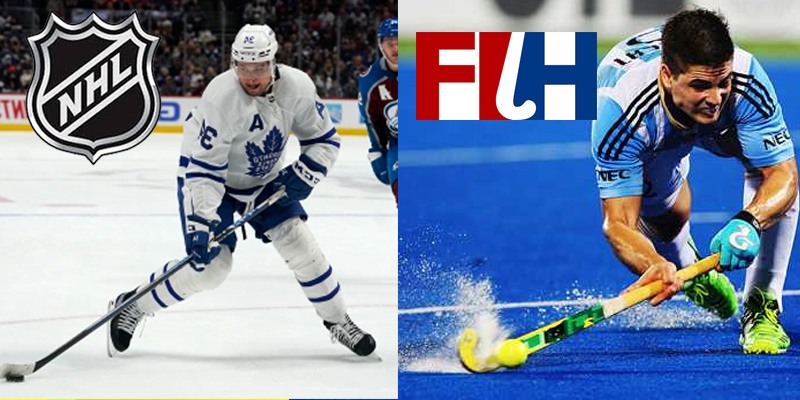
The women’s game quickly spread across many nations after becoming popular in the late 19th century. IFWHA, or the International Federation of Women’s Hockey Associations, was established in 1927. The FIH and IFWHA each had Golden Jubilees in 1974 and 1980, respectively. In 1982, the two organizations joined forces to form the current FIH.
With three Continental Associations—Pan America, Africa, and Asia—and 50 countries already affiliated by 1964, the FIH had 71 members by 1974. Currently, there are 137 national associations and five continental associations in the International Hockey Federation, which is still expanding.
History oF The National Hockey League (NHL)
Four hockey club presidents came together in 1917 to form the National Hockey League. The NHL’s original founding members were the Ottawa Hockey Club, Quebec Hockey Club, Montreal Canadians, and Montreal Wanderers.
The first NHL game played in the U.S. was between the Boston Bruins and the Montreal Maroons. The game ended 2-1 with a Boston Bruins win. The NHL changed its 24-game season schedule to a 30-game one during the same season. In 1926, three additional American teams—the Chicago Black Hawks, New York Rangers, and Detroit Cougars—joined the NHL.
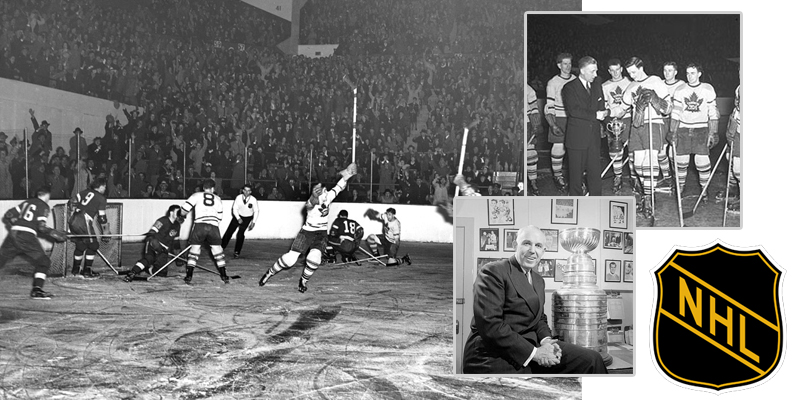
The Western Hockey League disbanded and sold most of its players to the newly formed NHL teams in the same year. As a result, the NHL is considered to be North America’s best hockey league.
The NHL saw the Brooklyn Americans leave in 1942. The only clubs in the NHL over the ensuing 25 years were the Canadiens, Red Wings, Bruins, Maple Leafs, Rangers, and Black Hawks. These six groups are now referred to as “the Original Six.” Willie O’Ree, a skater from New Brunswick, played for the Boston Bruins and became the first black player in the NHL. Val James, a Buffalo Sabres and Toronto Maple Leaf player, was the first African American to play in the NHL.
Twelve United States and Canada teams created the World Hockey Association in 1972 to compete with the NHL, but the league ultimately collapsed, and most of the clubs joined the NHL. The National Hockey League’s final is the Stanley Cup Ice Hockey Finals to decide who will win North America’s oldest sports trophy, the Stanley Cup.
The International ice Hockey Federation
The IIHF was founded by five clubs from the U.S. and Ontario. Although this league only lasted three seasons, it was the first one in which Americans played professional ice hockey.
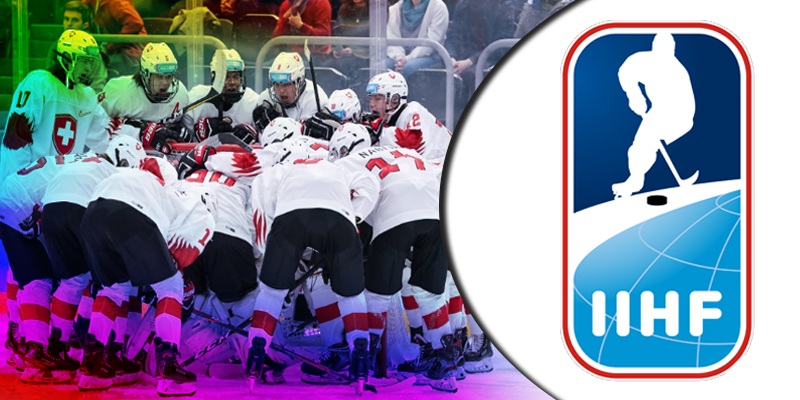
Today, the International Ice Hockey Federation hosts the annual Ice Hockey World Championship, an international competition.
Amateur Hockey Association
The Amateur Hockey Association was a men’s amateur ice hockey organization in Canada that was established on December 8th, 1886, and lasted until 1898. After one in Kingston, Ontario, which began play in 1883, this was the second ice hockey league established in Canada. It was intended to offer Canada’s winner a longer season to prepare.
The National Hockey Association
The National Hockey Association was a professional ice hockey league in Canada founded in 1910 with clubs in Ontario and Quebec. It’s the direct predecessor of the modern day National Hockey League.
The Western Hockey League.
The Western Hockey League disbanded in 1926, and the World Hockey Association was the first North American league to contend with the NHL after its launch in 1972.
The goal of the WHA was to establish professional hockey teams in large Canadian and American cities while luring top players by paying them more than their NHL teams did. That appeared to be against the terms of the NHL’s player contract. A reserve clause in the agreement kept players with their original National Hockey League teams after their initial contracts ended.
The WHA disregarded the clause and treated unsigned players as free agents, and a Philadelphia court ruled that the NHL was not allowed to use the reserve clause to stop players from joining WHA teams. In the first year of the WHA, 67 players switched from the NHL.
Final financial difficulties caused WHA teams to be unable to afford essential players and the league’s demise in 1979. The NHL took over the WHA’s teams.
The National Women’s Hockey League (NWHL)
The NWHL was launched in 2015 with four teams. Since then, the league has expanded to six teams, including the Toronto Six, the Minnesota Whitecaps, the Metropolitan Riveters, the Buffalo Beauts, and the Boston Pride. As the first women’s professional hockey league, the NWHL pays its players.
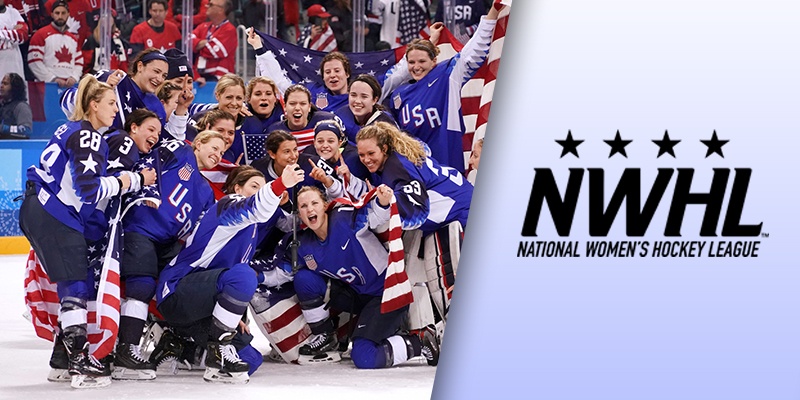
The NWHL champion is awarded the Isobel Cup, named after Lord Stanley Frederic Arthur’s daughter.
The Modern Ice Hockey Game
Ice hockey, also known as hockey, is a winter team sport played on ice skates, typically on a rink with lines and markings explicitly designed for the activity. In the game, two opposing teams control, move, and shoot a closed, vulcanized rubber disc known as a “puck” into the other team’s goal. The value of each goal is one point. The winning team is determined by how many goals they score.
Except for penalties, each team in a formal game has six skaters on the ice at once, one of whom is the goaltender.
Frequently Asked Questions About Ice Hockey History?
What’s the origin of ice hockey?
Many people think that hockey, which has a lengthy history, came from the ball and stick sports played in the British Isles, such as bandy in England, shinty in Scotland, and hurling in Ireland. Even though the British Isles received a lot of influence from these games, Canada is where ice hockey’s most essential modernizations came from since “Canadian rules” now predominate internationally.
When was the NHL founded?
The National Hockey League was established in November 1917. The NHL had six initial teams when it first began, but throughout time, that number rose to 32.
Which hockey teams entered the NHL first?
The National Hockey League (NHL) was established in 1917 by the presidents of four hockey clubs. The Ottawa Hockey Club, Quebec Hockey Club, Montreal Canadiens, and Montreal Wanderers were the NHL’s initial founding members.
When were the first hockey regulations created?
The Montreal Gazette published the first set of rules for modern ice hockey in 1877. Even though the initial rules included many of the game’s fundamental ideas, the rules have been modified as the game has evolved.
When did hockey gain Olympic status?
Ice hockey was the first sport to be added to the Olympic program at the 1920 Summer Olympics in Antwerp, Belgium. It was formally transferred to the Winter Olympics in 1924 and has remained a significant sport ever since.
Who is in charge of ice hockey globally?
A global regulating body for in-line hockey and ice hockey is the International Ice Hockey Federation.
